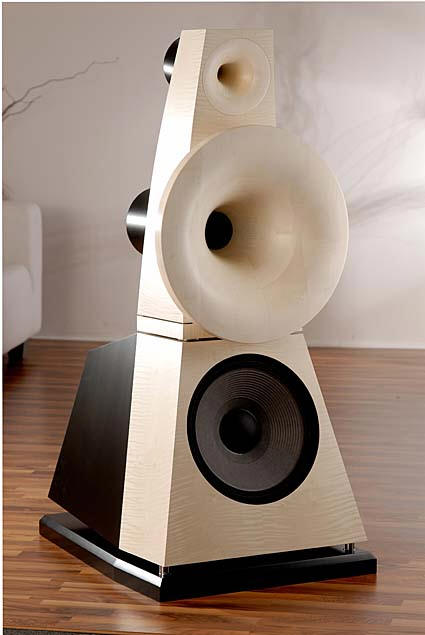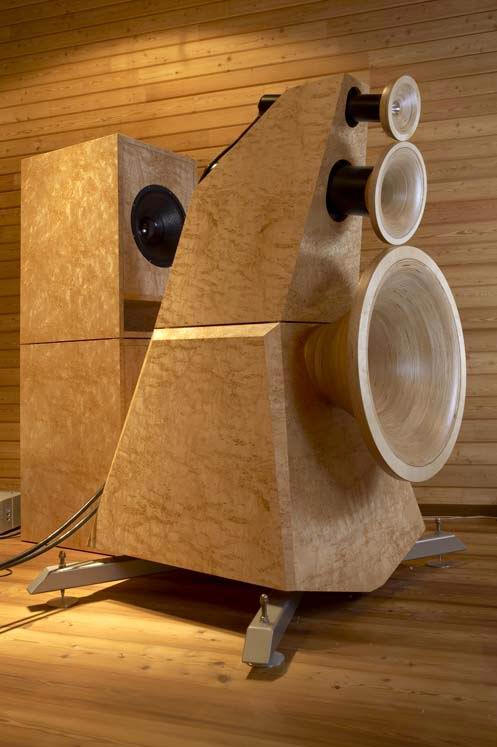 jessie.dazzle wrote: jessie.dazzle wrote: |
Regarding the Mid-Bass :
If these guys are using the main block as a Mid-Bass horn (as Romy's illustration suggests), then the story is getting interesting, and the plot is definitely thickening... It would however seem impossible to time-align this driver with the others. |
|
I would less wary in about the time-align, pays attention that they put the LF section with delay as well, perhaps intentionally to introduce continue LF delay. What is the most interesting in here is to learn if they do use the main block as a Mid-Bass horn. The absurd vertical arrangement of their speaker, the bogus bulge under the bottom and their very strange listing the speaker up from floor does suggest that they were trying to do something, unless they are complexly clueless….
However, what it strange is that there are also some logical inconsistencies even if they did use main block as a Mid-Bass horn. Pay attention at the picture above of those black 3 ways horns or at this image:

It uses at the buttom a regular sealed or ported box and the driver as direct radiator but they also put the speaker on the spikes and made the bottom looks like it is a horn output. Also at this larger model:

I have difficulties to imagine why, if the have the down-fairing horn inside, they did not use the entire footprint for the horn mouth. They have an extra foot in front and a foot on the sides. Frequency-wise it would be extra 15Hz and it would be very strange if it was no used.
I personally have a feeling that they most likely do not have anything inside going on as if it was then the shape of the block would be different and it would not be the “crack” (even decorative) between the top and bottom panels. However I do not know certainly what they did in that speaker. Rgs,
The Cat
"I wish I could score everything for horns." - Richard Wagner. "Our writing equipment takes part in the forming of our thoughts." - Friedrich Nietzsche
|